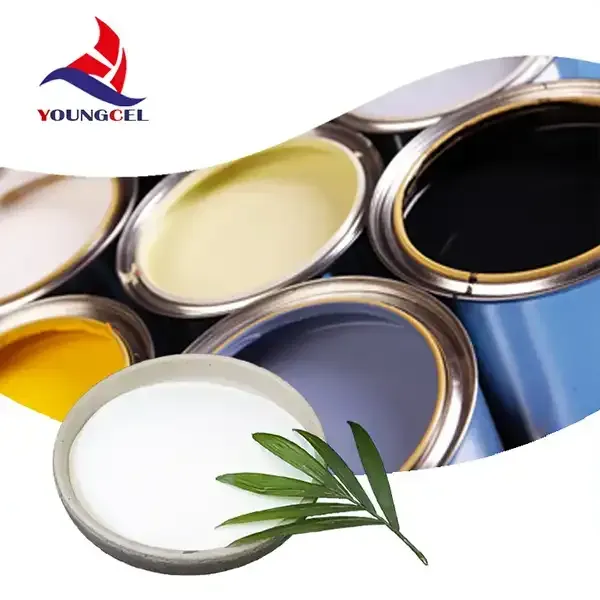The Promise of Ether Cellulose in Modern Applications
Ether cellulose, a versatile derivative of cellulose, has gained significant attention in a variety of fields due to its unique chemical properties and functional versatility. As a semi-synthetic polymer, ether cellulose offers exceptional functionality that is pivotal for numerous applications, from coatings to pharmaceuticals. This article explores the characteristics of ether cellulose, its production methods, and its diverse applications, highlighting the promising future that lies ahead for this remarkable material.
Understanding Ether Cellulose
Ether cellulose is derived from cellulose, which is naturally found in plant cell walls and is one of the most abundant organic polymers on Earth. The modification of cellulose into ether cellulose involves the reaction of cellulose with etherifying agents, typically under alkaline conditions. This results in a range of products, depending on the degree of substitution and the specific etherifying agents used. The most common types of ether cellulose include methyl cellulose (MC), ethyl cellulose (EC), and hydroxypropyl methyl cellulose (HPMC), each differing in their properties and applications.
One of the key attributes of ether cellulose is its solubility in hot and cold water, which distinguishes it from its parent cellulose. This feature is particularly important for industrial applications, as it allows ether cellulose to be utilized in scenarios where traditional cellulose would not be effective.
Applications of Ether Cellulose
The diverse applications of ether cellulose stem from its unique properties, including film-forming ability, thickening capacity, and adhesive qualities
. Some prominent areas where ether cellulose is utilized include1. Pharmaceuticals In the pharmaceutical industry, ether cellulose is widely used as a binder, thickener, or excipient in various formulations, including tablets and suspensions. Hydroxypropyl methyl cellulose, for instance, is often used in controlled-release formulations due to its ability to form gels upon hydration, regulating the release of active pharmaceutical ingredients.
ether cellulos

2. Food Industry Ether cellulose is regarded as a safe additive in food products, serving as a thickener and stabilizer. Methyl cellulose is particularly useful in gluten-free food products, enhancing texture and moisture retention.
3. Cosmetics and Personal Care The cosmetic industry has adopted ether cellulose for its thickening and stabilizing properties. It is commonly found in lotions, creams, and hair styling products, contributing to the desired viscosity and consistency of these formulations.
4. Construction Materials In the field of construction, ether cellulose is added to cement and mortar as a water-retaining agent. This enhances workability, prevents cracking, and minimizes the loss of water during the setting process, leading to stronger and more durable constructions.
5. Coatings and Adhesives Ether cellulose is an integral component in the manufacture of water-based paints and coatings. Its film-forming capability ensures a smooth application and finish, while its adhesive qualities enhance the bonding properties of various substrates.
The Future of Ether Cellulose
As technology and research continue to advance, the potential for ether cellulose applications is expanding. Innovations in green chemistry are paving the way for more sustainable production methods, which will only enhance the appeal of ether cellulose as a bio-based polymer. Researchers are exploring new etherifying agents and processes that could further broaden the material’s compatibility and functionality in various applications.
Moreover, the growing trend toward eco-friendly and biodegradable materials positions ether cellulose as a favorable alternative to synthetic polymers. Its bio-based origin and versatile properties make it an attractive choice for industries aiming to reduce their environmental impact while still meeting performance demands.
In conclusion, ether cellulose emerges as a multifaceted and valuable material with a bright future ahead. Its wide range of applications across multiple sectors reinforces its significance in today’s marketplace. As industries seek innovative and sustainable solutions, ether cellulose stands out as a promising candidate, paving the way for advancements in technology and environmental responsibility. With ongoing research and development, the potential of ether cellulose is only beginning to be realized, heralding a new era of functional materials in both established and emerging fields.
-
The Application and Significance of Construction RdpNewsMay.19,2025
-
Industrial Grade HpmcNewsMay.19,2025
-
Building Coating Adhesive Building Coating Adhesive HpmcNewsMay.19,2025
-
Application Of Hpmc For Detergent For Detergent In DetergentsNewsMay.19,2025
-
Application Of Hpmc Cellulose In Cement-Based MaterialsNewsMay.19,2025
-
Application Of High Quality Hpmc For Construction In The Field Of ConstructionNewsMay.19,2025




